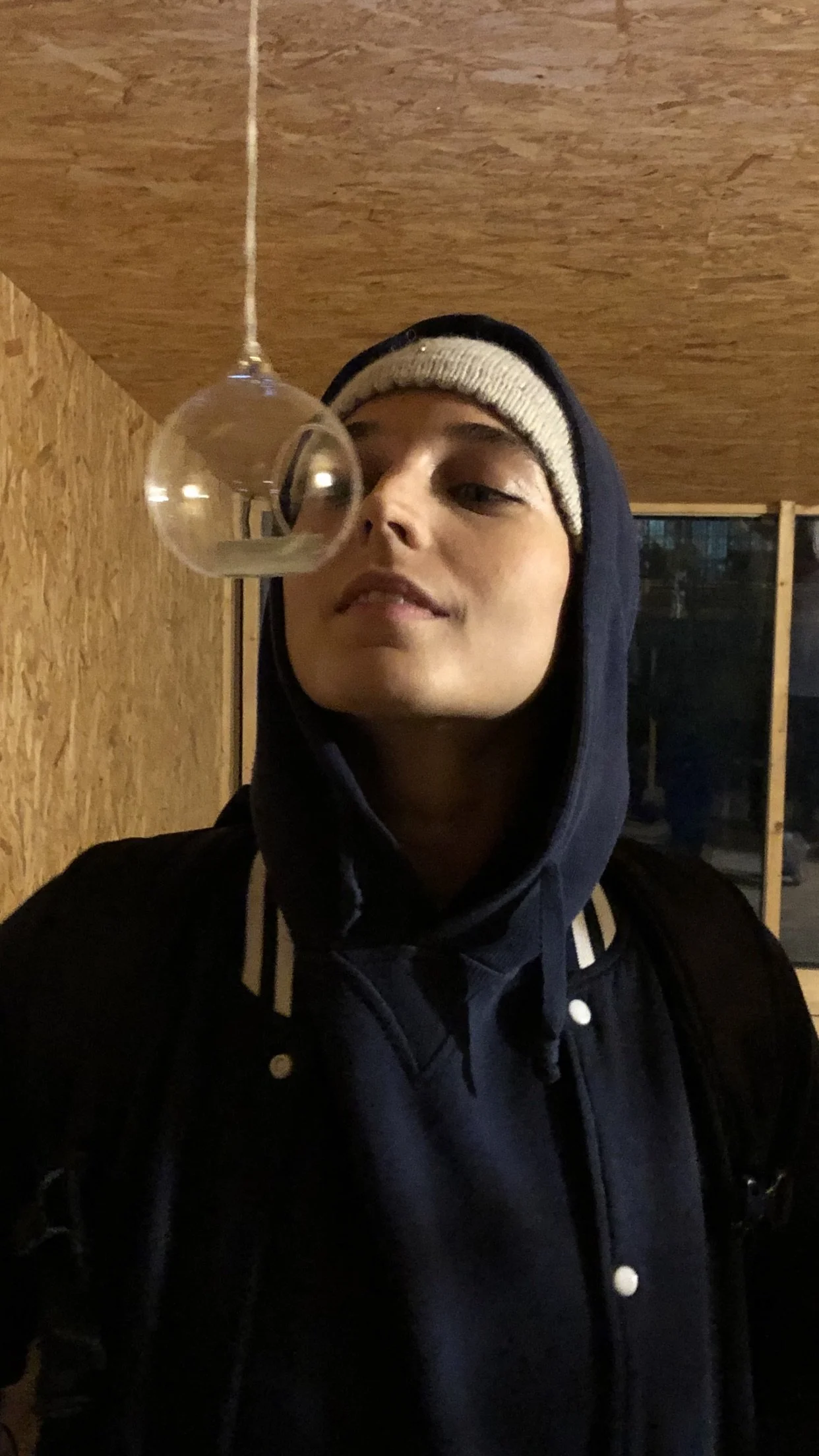Interview
Anna Novakov
Anna Novakov is a Serbian-American artist, writer and curator. Her practice focuses on the transitory modalities of the olfactory, vestimentary and gastronomic arts.
As an artist and certified perfumer, Novakov is able to unpack events through a multisensory artistic lens. Anna does this by examining seemingly inconsequential things, such as the smells of outdoor markets and historic recipes.
While her creative practice focuses on conceptual perfumery and textile design, she is also invested in the role of scent and touch in the construction of personal and collective memories, fragrance as an aspect of Utopian societies, and cooking as a sociopolitical act.
What is your background and how did you start your journey in the art world?
“I was born in Belgrade, Serbia and raised in Berkeley, California. My interest in fashion and textiles started early. My mother was a seamstress and my grandmother was a very accomplished embroiderer. As a child, I became a fashion model – an activity that influenced my interest in the tactile qualities of fabric. At university, I studied literature and art history, eventually earning a Ph.D. in Art and Art Education from New York University. I worked as a museum curator, art critic and art history professor before starting my studio practice in art and design. Now, I divide my time equally between Santa Fe, New Mexico and New Rochelle, New York.”
What does your work aim to say? Does it comment on any current social or political issues?
“My work references my Balkan cultural heritage, melded with the decades I spent living in the San Francisco Bay Area – the cradle of Silicon Valley technology. As an artist, I am fascinated by what we carry with us from our past, and the way that cultural diasporas influence our personal and collective identities. I am currently interested in capturing the rapidly disappearing art of traditional folk clothing, through a melding of digital patterns with historical photographs of agrarian women.”
Which current art world trends are you following?
“I have been following the incredible force of the Black Lives Matter movement. It has opened up so many opportunities to see the work of black creatives in various fields. It’s such positive social and cultural change.”
“My creative practice is an ongoing process of personal and cultural retrieval. It is a way to tell my story of diasporic displacement through epigenetics – the ability to inherit memories from the life experiences and traumas of distant relatives.”
Do you plan your work in advance, or is it improvisation?
“During the past three years, I have been working on a fairly large project with many moving parts. It is called Yugo-topia. The works in this series tap into my childhood memories of life in Socialist Yugoslavia, as well as my dual identities as a Serbian and American. These multimedia works often engage scent as a way of accessing early memories, as well as encouraging sensory interaction between the viewers and the works. The installations are always specific to each venue, and can be expanded or contracted depending on the conditions and technical specification of each site.”
What process, materials, techniques, etc., do you use to create your artwork?
“Because of my background as a writer and art historian, I usually start with a text or some type of historical event. That usually triggers sensory associations that lead to works that have a tactile or olfactory component to them. Recently, I have become very involved with the encaustic process. I enjoy the smell of the wax, the almost magical changes between liquid and solid qualities, and its ability to both reveal and obscure its subject matter.”
What’s your favorite artwork and why?
“I am fascinated by the beauty and intricacy of Balkan folk clothing. In particular, I have been studying the geometric patterns that are woven into the aprons and vests of Serbian women’s dresses – a practical as well as aesthetic adornment. As a traditional garment, it displays the artistry of the maker while acknowledging the value of humble cloth that has been elevated to personalized art. I so loved my great grandmother’s geometric patterns that I had them incorporated into my tattoos – a way of acknowledging my handiwork heritage.”
Have you had any noteworthy exhibitions you'd like to share?
“In 2018, I was in residence at the ZK/U Center for Art and Urbanistics in Berlin. While there, I presented two installations: Trailing Belgrade and Red Leather. Trailing Belgrade is an olfactory/video installation that taps into the epigenetic smells of Belgrade. A process of conscious and unconscious forgetting. During the course of the intervention, the space was demarcated by a series of glass globes that emit the scents of concrete, leather, tobacco, coffee and baked goods. The looped video captures curators, critics and visitors at the Salon of the Museum of Contemporary Art Belgrade, describing the smells of their city. You can read about it here.
Red Leather, also in 2018, is an audio and olfactory installation, formed from the sounds and smells of my childhood in the 1960s in Belgrade. In a darkened room, audience members experience the live mixing of scents layered upon a pre-recorded monologue that is interspersed with audio clips from Ljubica Maric’s (1909-2003) Cantata Song of Space for Mixed Choir and Orchestra (1956).”









